How to Replace Your Lawn With a Garden
http://decor-ideas.org 01/17/2014 03:24 Decor Ideas
In semiarid and arid regions, a well-designed, water-efficient landscape can often look more at home and more beautiful than a landscape dominated by plants whose water needs exceed what nature provides. Even in areas where rainfall is plentiful, converting all or part of a lawn to a more diverse planting can have multiple benefits — from an expanded wildlife habitat to less frequent maintenance.
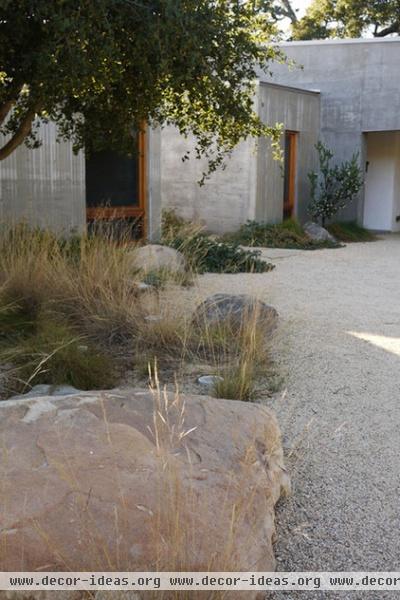
Project: Nix the lawn and grow a garden.
Why: As homeowners face the rising costs of maintaining a lawn — both financial and environmental — many are choosing to remove or reduce turfgrass in favor of a climate-friendly mix of plants and soft, water-permeable paving.
It’s a good project for you if:
1. You are concerned about water and energy conservation.
The typical suburban lawn consumes 10,000 gallons of water above and beyond rainwater each year, according to the Environmental Protection Agency. We don’t often think about how water and energy use are linked, but reducing a landscape’s water use also saves energy, since it takes considerable energy to pump, heat, treat and deliver water.
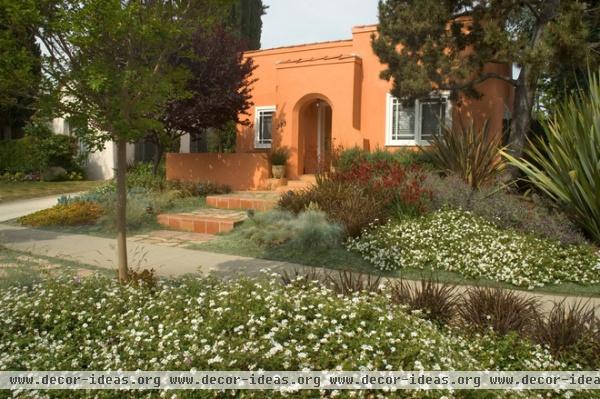
2. Your current lawn is in a less-than-ideal spot, such as on sloping ground or in shade. Why maintain a lawn where it doesn’t want to be? Ditch the patchy turf or strenuous uphill mowing sessions for a landscape with less maintenance. In this example, where there was once sloping lawn, trees, shrubs and other leafy plants now help intercept and slow down rainfall, reducing runoff.
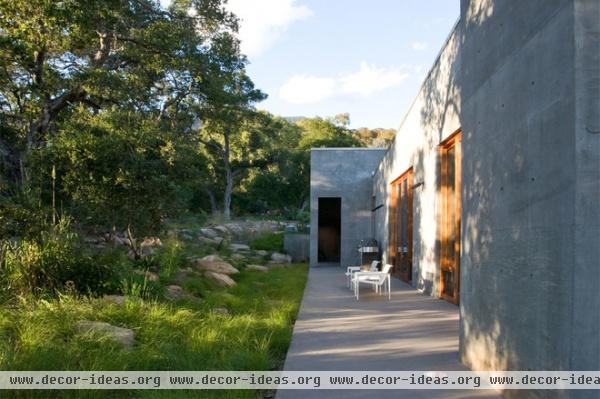
3. You would like to support your local wildlife. Birds, butterflies and beneficial insects are drawn to multitiered environments featuring native trees, fruiting shrubs and vines, and ground-level grasses and perennials.
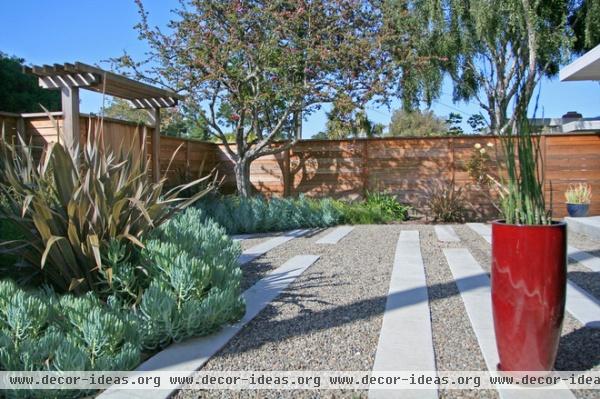
4. You would like to spend less time and money maintaining a lawn. With the average homeowner spending 150 hours per year on lawn care, it’s no wonder that the no-lawn movement is gaining popularity. Depending on the composition of the plants chosen (and whether low-maintenance ground covers, such as gravel, are incorporated), a shrub- and perennial-dominated yard should take between 25 to 75 hours a year to maintain. Select native plants or those compatible with your region’s climate and soil, and you’ll save on fertilizer, herbicides and other items as well.
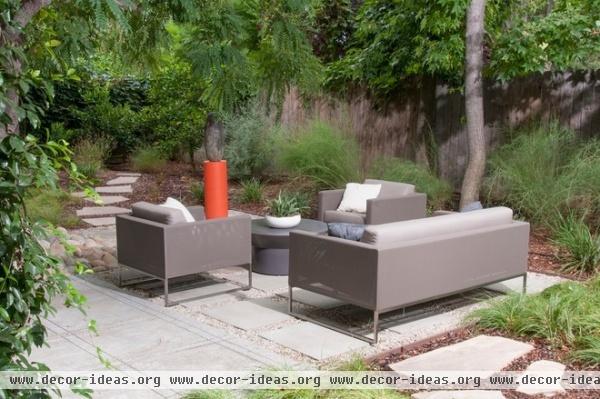
Who to hire: A landscape designer or licensed landscape architect can plan and design your yard with water use in mind. He or she will create hydrozones, where plants of similar water, sun and soil needs are planted together. Licensed landscape contractors are experienced in planting and in installing drip, subsurface and low-volume overhead irrigation.
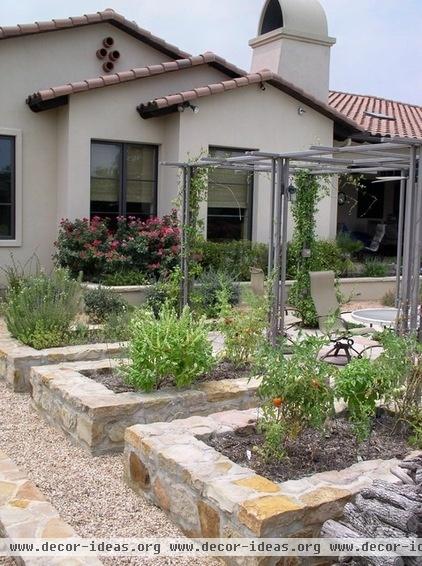
Cost: It varies with the size of the project, your site and what elements — trees, shrubs, perennials, paving — you are replacing your lawn with. That said, here are some general guidelines.
If you are hiring a designer or landscape architect to plan your garden’s makeover, the cost can start at $1,500 for a planting scheme and run higher for a complex plan with more design elements.
If you remove the lawn yourself using one of the methods described below, you’ll save the cost of demolition; otherwise plan to spend an average of $3,000, depending on the size of your lawn and the eradication method.
A mix of trees, shrubs, perennials and grasses for an average front yard costs $2,000 to $6,000, depending on the container sizes. You may be tempted to save money by doing the planting yourself, but be aware that contractors are able to purchase plants wholesale, and what they charge to both purchase and plant them correctly often equals the plants’ retail price.
Irrigation costs vary according to the method used (drip and subsurface irrigation systems are less expensive than sprinklers), materials and even the soil. The average price is $2,000 to $5,000.
Typical project length: Two to four weeks for design plus one to two weeks for demolition and installation.
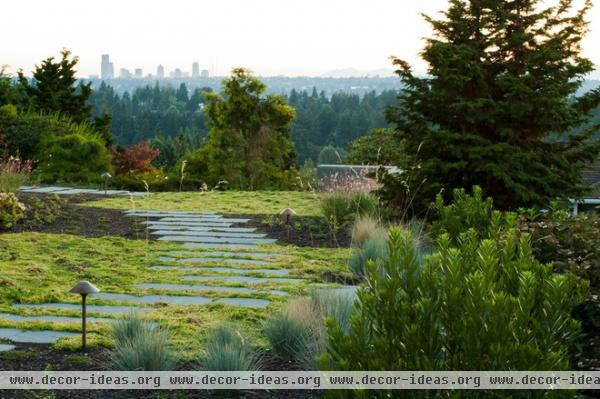
Permit: Usually permits are not needed for planting projects, but if your project is larger than 2,500 square feet, check with your municipality, because special landscape ordinances may apply. In addition, check local codes if you plan to redo your parkway (or hell strip).
Best time to do this project: It depends on your lawn-removal method and your climate.
How to Get Rid of the Grass
Here are two ways to kill your lawn without herbicides. When the ground is soft enough to work, you can:
Dig, dig, dig. Although many experts discourage this method because it can create a ripe environment for weeds to germinate in — not to mention the toll it takes on one’s back — this is fastest method. You can physically remove sod by cutting it into strips with a sod cutter, rolling the strips up, and either taking them away or turning them over and letting them compost in place. If your lawn is Bermuda grass, you will have to dig out the deeply rooted grass stolons, shaking the excess soil from the roots as you go.
Use the lasagna method. This technique uses layers of cardboard or newspaper as well as a thick layer of organic mulch to deprive the lawn of light and water. The grass will die in about two months, and you can dig right through the mulch and newspaper and plant in the soil.
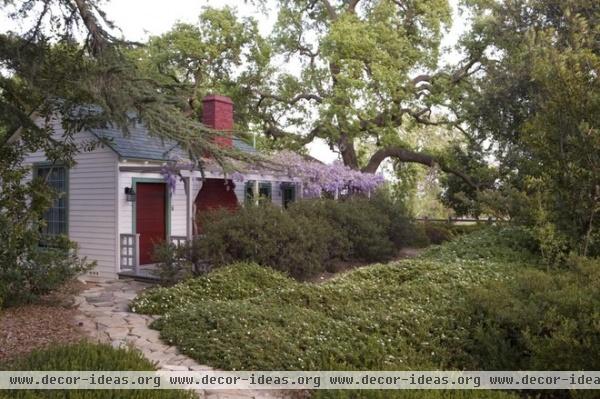
Planting: Now for the fun part. In the western U.S., you can plant during much of the year, but doing so in fall and winter means that plants will have the benefit of cool-season rains to become established before the heat of summer. This actually holds true (for trees and shrubs) in many other parts of the country as well, because root growth does not halt until temperatures belowground dip below 40 degrees Fahrenheit.
First Steps
Watch for incentives. Some cities offer rebates for homeowners who replace their lawn with less thirsty plants and/or low-volume irrigation. Check with your municipality before beginning your project.
Get and save ideas. Browse photos of low-water landscapes. (Tip: Select your area on the left side of the Houzz Photos page.) Then save your favorites in an ideabook.
Get help if you need it. Find landscape architects and landscape contractors in your area.
Or make it a DIY project. Several Houzz ideabooks can help you start thinking about your project, including The Case for Losing the Traditional Lawn, 7 Low-Maintenance Grass Alternatives and Get Along With Less Lawn. Or look for books on xeriscaping at your local library or bookstore.
More: Find guides to gardening and native plants in your region
Related Articles Recommended












